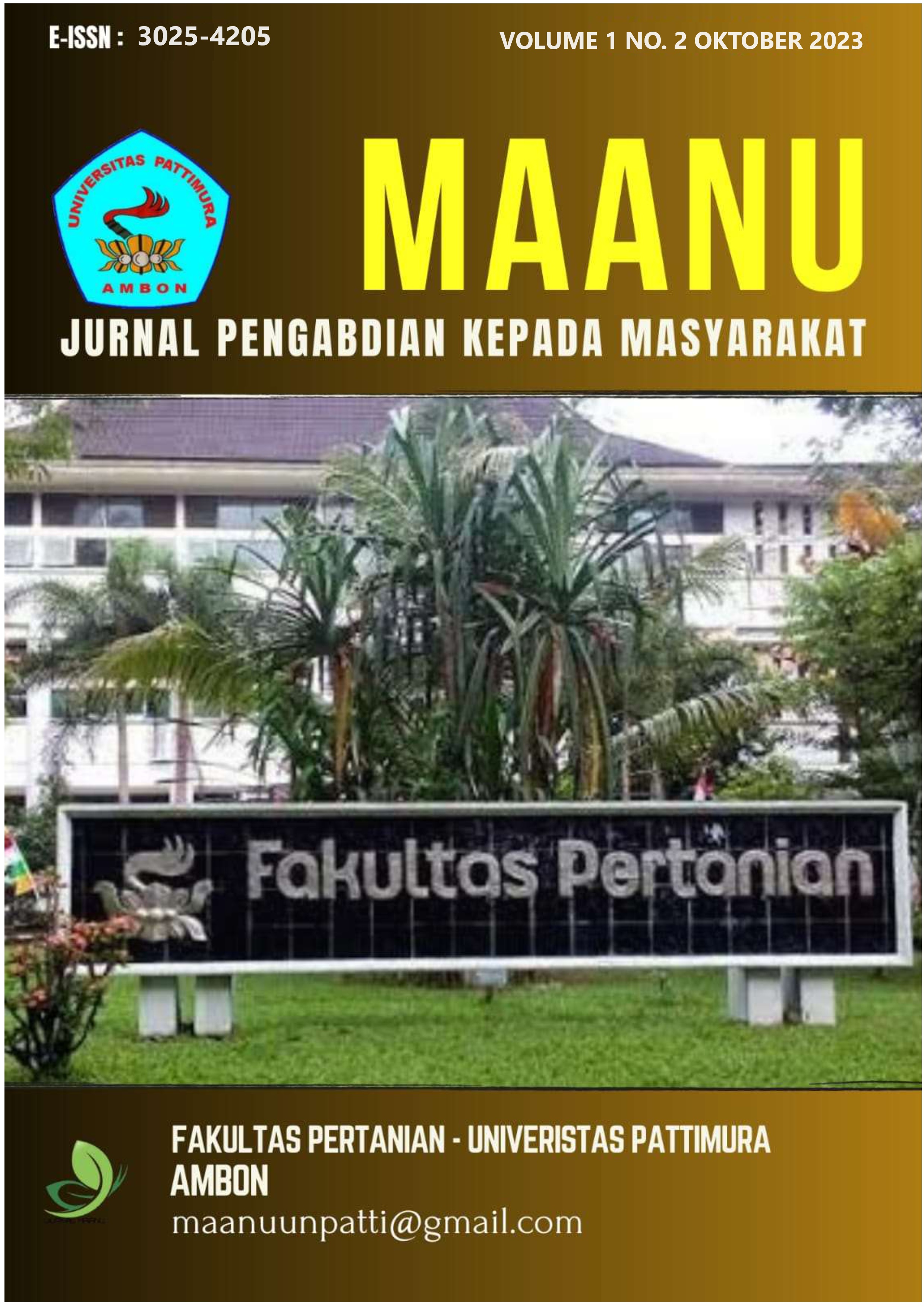PEMANFAATAN DAUN LAMTORO DALAM PAKAN AYAM PETELUR DI PETERNAKAN DUSUN WARINGIN CAP
Abstract
Most of the population of Waringin Cap are farmers construction workers, and a small portion are breeders. Government support conditioned one farmer to receive assistance for 700 laying hens, divided into two, 250 each, after the unavoidable loss of 200 chicks. The production of kept chicken eggs does not meet the requirements because they are constrained by the feed supply, both in quality and quantity. Community service activities aim to increase the knowledge and abilities of breeders regarding the use of natural resources around the livestock location to be used as feed ingredients. Community service activities in Waringin Cap hamlet have several solutions, namely an approach with the hamlet government and partner breeder groups regarding the aims and objectives of implementing the science and technology implementation program, implementing counseling, and asking questions about various practical knowledge related to the primary factors, namely feed and its provision, distributing brochures on problems and solutions for improving feed formulas and demonstration plots for laying hen feed formulas. Improving feed using lamtoro leaves is one way that can help farmers meet livestock needs. Community service activities have received good appreciation from farmers because they provide new information for breeders to improve the quality of feed provided so that they can increase egg production.
Downloads
References
Amerah, A. M., Ravindran, V., Lentle, R.G., &. Thomas, D. G. (2007). Feed particle size : implication on the digestion and performance of poultry. J. World’s Poultry, Sci. (63), 439-453.
Amrullah, I. K. (2003). Nutrisi Ayam Petelur. Lembaga Satu Gunung Budi, Bogor.
Eniolorunda, O.O. (2011). Evaluation of biscuit waste meal and Leucaena leucocephala leaf hay as sources of protein and energy for fattening “yankassa” rams. African J. of Food Sci, Vol. 5 (2), 57-62.
News & Events. Pencegahan Penurunan Produksi Telur Akibat Deposit Lemak. http://www.fenanza.id>pencegahan. (Tanggal Akses 20 Juli 2023).
Nurdiyantoa, R., Sutrisna, R., & Khaira, N. (2015). Pengaruh Ransum Dengan Persentase Serat Kasar Yang Berbeda Terhadap Performa Ayam Jantan Tipe Medium Umur 3--8 Minggu. Jurnal Ilmiah Peternakan Terpadu, Vol. 3(2), 12-19.
Rao, Q., Labuza, & Theodore P. (2012). Effect of Moisture Content on Selected Physicochemical Properties of two commercial Hen Egg White Powders. Journal of Food Chemistry, 132 (202), 373-384.
Salang, F., Wahyudi, L., Queljoe, E., Katili, D. Y. (2015). Kapasitas Ovarium Ayam Petelur Aktif. Jurnal MIPA, 4(1), 99-102.
Standar Nasional Indonesia. (2017). Pakan Ayam Ras Petelur. Direktorat Pakan. Direktorat Jenderal Peternakan dan Kesehatan Hewan Kementerian Pertanian.
Sulaiman D., Irwani, N., & Maghfiroh, K. (2019). Produkstivitas Ayam Petelur Strain Isa Brown Umur 24 – 28 Minggu. Jurnal Peternakan Terapan, Vol.1 (1), 26-31.
Tillman, A.D., H.Hartadi, S. Reksohadiprodjo, S. Prawirokusumo & S. Lebdosoekojo. (1998). Ilmu Makanan Ternak Dasar. Gadjah Mada University Press, Yogyakarta.
Zahra, A.A., Sunarti, D., Suprijatna, E. (2012). Effects of free choice feeding on the egg production performance of Coturnix coturnix japonica. Anim. Agric, Vol.1(10), 1-11.
Copyright (c) 2023 Tabita Naomi Ralahalu, Dominggus Malle, Lily Joris

This work is licensed under a Creative Commons Attribution-NonCommercial-ShareAlike 4.0 International License.




.png)


1.png)
